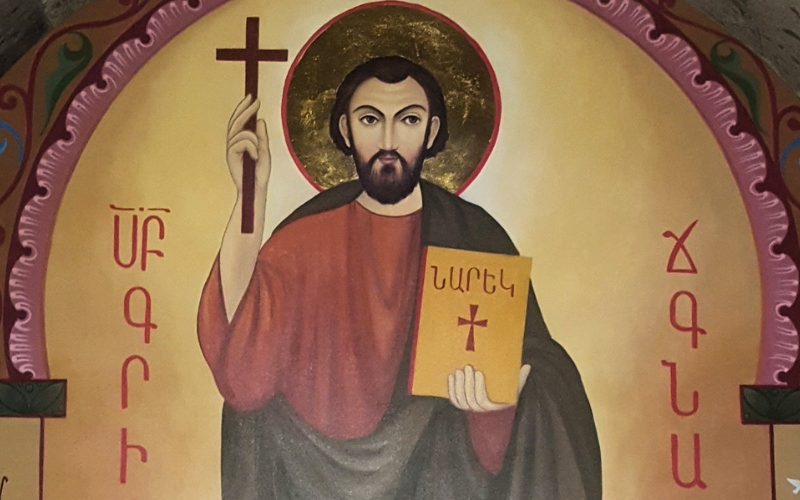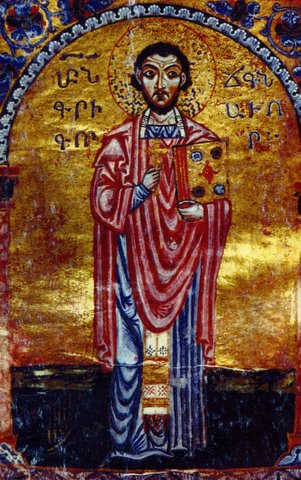In 2015, Pope Francis declared St. Gregory of Narek a Doctor of the Church.
First off, what is a “Doctor of the Church”?
“Doctor of the Church” is a title the Church gives to holy men and women who particularly contributed to the Church’s learning in some way.
Now, unless you follow the inner-workings of the Congregation for the Cause of Saints closely, you probably didn’t know they had even proposed St. Gregory of Narek as a new doctor. And unless you are an Armenian Christian, you probably don’t know who St. Gregory of Narek is.
So here’s a quick introduction:
1) St. Gregory lived A.D. 951 – 1003
Born in Armenia, his father was a priest (remember, Eastern Churches have married priests). His mother died when he was young. His mother’s uncle Anania of Narek, founder of their local monastery and school, took care of his education, and his father was made a bishop.
2) He was a priest-monk
He entered a nearby monastery called Narekavank at a young age. At the age of 25, he was ordained a priest.
Narekavank, his monastery, was the most prominent medieval school in Armenia. It lasted until 1915 when it was abandoned during the Armenian Genocide. It was demolished around 1951 and a mosque replaced it.
3) He composed in a wide-range of styles
His works include theological treatises, chants, melodies, letters, and prayers.
4) His most famous work is Book of Lamentations
Also known simply as Narek (from his name), the work is comprised of 95 prayers, each entitled, “Speaking with God from the Depths of the Heart.” Completed just before his death, it is considered to be one of the greatest works of Armenian literature.
You can read the work online for free.
5) His prayers are still used today in the Armenian Divine Liturgy
His prayers are recited daily in Armenian liturgies throughout the world. For example, after ascending to the altar, the priest silently recites a prayer from Prayer 33 of his Book of Lamentations:
“We beseech you with outstretched arms, with tears and sobbing prayers. Appearing before you, judge who strikes terror in our hearts, we approach with great trembling and grave fear, presenting first this sacrificial offering of words to your power that is beyond understanding.”
6) He’s known as “the watchful angel in human form”
Many miracles are associated with his intercession. So not only start reading his works, but start asking for his prayers!
7) His feast day is Feb. 27
He is venerated in both the Catholic Church and the Armenian Apostolic Church, and the Oriental Orthodox Church. In the Catholic Church, his feast is celebrated on Feb. 27.
Follow ChurchPOP:
Telegram Channel
Truth Social
GETTR
Gab
Parler
Signal Group
WhatsApp Group 1
WhatsApp Group 2
ChurchPOP Facebook Group
Email List
[See also: Secrets of the Saints: The Forgotten Spiritual Power of Fasting]
[See also: Empowering Women in Holiness: The 4 Female Doctors of the Church]


